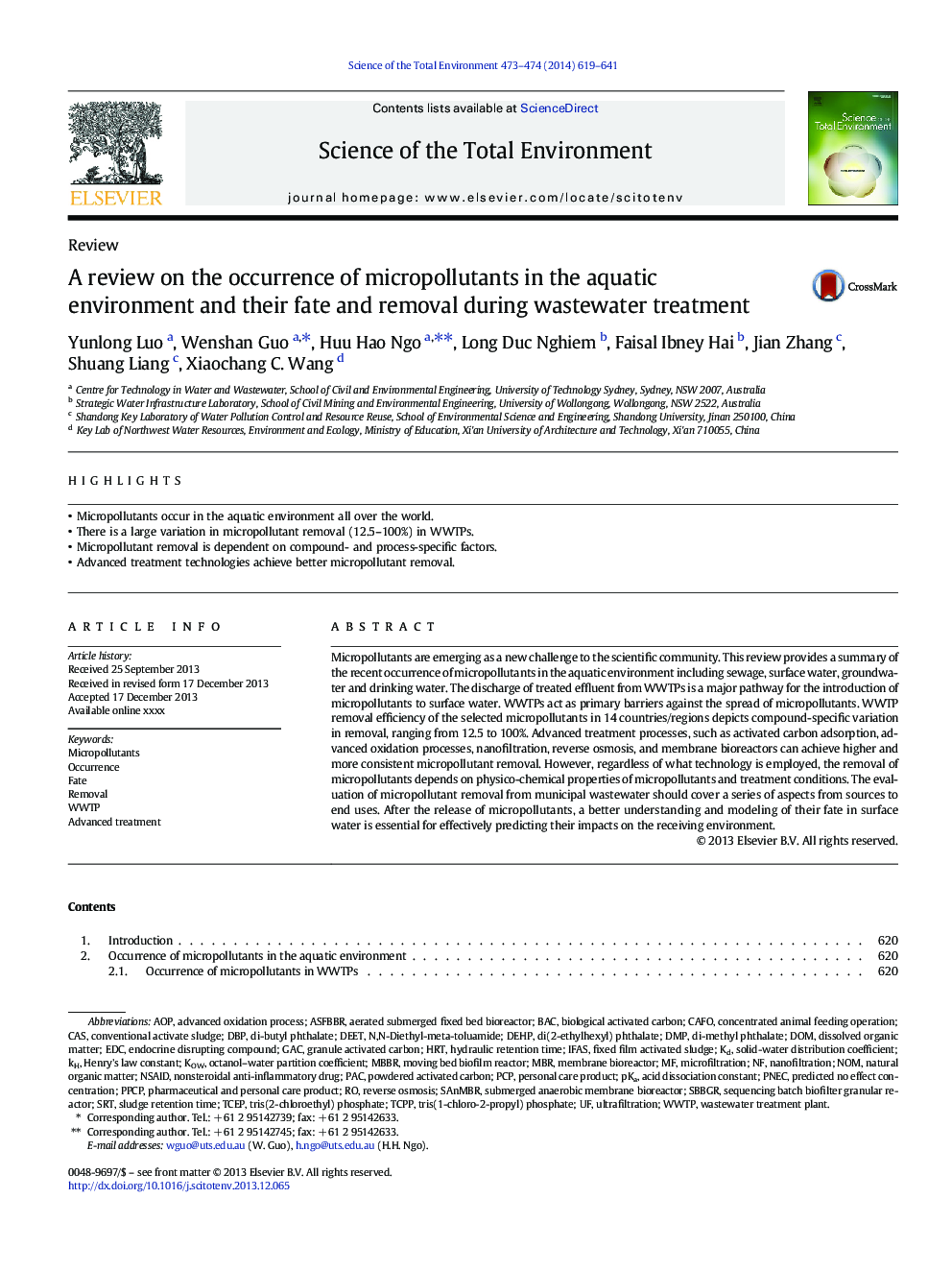| Article ID | Journal | Published Year | Pages | File Type |
|---|---|---|---|---|
| 6331786 | Science of The Total Environment | 2014 | 23 Pages |
Abstract
Micropollutants are emerging as a new challenge to the scientific community. This review provides a summary of the recent occurrence of micropollutants in the aquatic environment including sewage, surface water, groundwater and drinking water. The discharge of treated effluent from WWTPs is a major pathway for the introduction of micropollutants to surface water. WWTPs act as primary barriers against the spread of micropollutants. WWTP removal efficiency of the selected micropollutants in 14 countries/regions depicts compound-specific variation in removal, ranging from 12.5 to 100%. Advanced treatment processes, such as activated carbon adsorption, advanced oxidation processes, nanofiltration, reverse osmosis, and membrane bioreactors can achieve higher and more consistent micropollutant removal. However, regardless of what technology is employed, the removal of micropollutants depends on physico-chemical properties of micropollutants and treatment conditions. The evaluation of micropollutant removal from municipal wastewater should cover a series of aspects from sources to end uses. After the release of micropollutants, a better understanding and modeling of their fate in surface water is essential for effectively predicting their impacts on the receiving environment.
Keywords
sRTDEHPMBBRDMPPCPCASpKaNSAIDDEETDBPPPCPPACPNECGACIFASMBRHRTEDCSequencing batch biofilter granular reactorSAnMBRTCPPN,N-diethyl-meta-toluamideAOPCAFOBACReverse OsmosisMembrane bioreactorsubmerged anaerobic membrane bioreactorendocrine disrupting compoundTris(2-chloroethyl) phosphateacid dissociation constantnonsteroidal anti-inflammatory drugpharmaceutical and personal care productdi(2-ethylhexyl) phthalateMoving bed biofilm reactorSludge retention timehydraulic retention timeTCEPoctanol–water partition coefficientConcentrated animal feeding operationPredicted No Effect ConcentrationAdvanced oxidation processHenry's law constantDOMDissolved organic matterpersonal care productNatural organic matterMicrofiltrationNOMNanofiltrationbiological activated carbonPowdered activated carbonKow
Related Topics
Life Sciences
Environmental Science
Environmental Chemistry
Authors
Yunlong Luo, Wenshan Guo, Huu Hao Ngo, Long Duc Nghiem, Faisal Ibney Hai, Jian Zhang, Shuang Liang, Xiaochang C. Wang,
